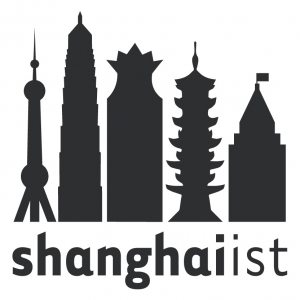The Observer features Grindr ‘Grindr: a new sexual revolution?’
Grindr: a new sexual revolution? By Polly Vernon
Grindr is a free phone app which lets gay men instantly pinpoint each other using GPS technology. It has already transformed the sex lives of 700,000 men around the world. But could it work in the straight market? And would it mean the end of monogamy?
Ever heard of Grindr? If you have, I’m going to guess that you are male and gay; or male, technically straight and somewhat curious; or the straight friend of a gay man. If not, allow me to enlighten you.
Grindr (pronounced “grinder”) is a free downloadable iPhone app which, it promises, will help you “Find gay, bi, curious guys for free near you!” Grindr harnesses GPS, allowing you to establish who else in your direct vicinity is also using Grindr. It shows you – on a gridded display – who these men are and what they look like; it’ll tell you how far away from you (in feet, and even more thrillingly, fractions of feet) they are standing; and it will allow you to “chat” them, if they take your fancy. Although buried deep in the Grindr ethos is the idea that you shouldn’t do in cyberspace what you could be easily be doing in person. Don’t “chat” when you could actually, you know, chat.
Grinding is an intoxicating experience. I was first introduced to it on the roof terrace of a bar in east London by my friends J and W. J launched the app on his iPhone and I got palpitations as the grid of portraits (ordered in terms of geographical proximity – your nearest Grindr user is posted at the top left) instantly unfurled itself across the screen. All these men, effectively coming on to – well, not me, but still… It is literally a sexy app and the overflow of that sexual potency, the decadence, sweeps you along on a wave of lust, regardless of who you are and what your gender or sexual orientation might be. I was reminded of the first time I entered words into the search criteria on Google, of the first time I downloaded music from iTunes – I knew I was engaging with a bit of technology that would alter things on a profound level.
I scrolled on and on through the grid of gay offerings, furtively trying to match the pixelated images with the real-life men ranged around me in the bar.
“But do you want to know the funny thing?” J said. “The best nights you can have on Grindr are the nights when you stay in.” And he laughed, wickedly.
Grindr is reconfiguring the landscape of human relationships. Partly because it’s sex in an app, the sexual equivalent of ordering take-away, or online fashion (my friend Kevin calls it “net-a-port-gay.com”, and he’s so pleased with himself for this he says I can use his real name. Everyone else asked to remain anonymous). Grindr was launched on 25 March 2009; now more than 700,000 (and counting) men in 162 countries around the world are using it to phenomenal effect, if J, W, Kevin and the other gay men I’ve asked are any kind of a guide. “I’ve never, ever had so much sex in my life!” R told me gleefully. “I’ve probably had as much in the past eight months of Grinding as I have over the 20 years since I came out. Maybe more.” It’s only going to get bigger, to facilitate more sex. Two thousand people download it every day, and a BlackBerry-friendly version of the app launched less than a month ago – a development which could triple Grindr’s reach.
But Grindr is more significant even than that suggests. It marks a major evolution in how all of us – gay, straight, alive – will meet and interact with each other. Depending on who you talk to, this is either brilliant (liberating, socially enabling – the end, even, of loneliness and boredom); or a potential disaster (signalling the end of monogamy, facilitating sex addiction). Either way, it matters.
Arguably we are living in a post-gay era. The divide between gay and straight worlds diminishes daily. Gay culture and straight culture become increasingly intertwined. For example, Grindr’s biggest boost occurred in June 2009, after gay icon Stephen Fry told the boorishly straight Jeremy Clarkson all about it during an interview on super-hetero TV show Top Gear.
So Grindr would matter even if it was not in the process of developing a straight version of its sexy self. But it is. It is likely that the Grindr experience will be open to a straight market by the end of 2010.
“Oh, at the very latest,” says Joel Simkhai, the founder of Grindr. He’s a wiry, neatly handsome 33-year-old man with an American accent, a hectic manner and a sharp business edge. I meet him for coffee in a chic hotel in London. This is where he’s basing himself while he checks out Grindr’s flourishing UK market; he usually lives in Los Angeles. “The UK is the second biggest country for Grindr after the US,” he tells me. “London is the third biggest city after New York and LA. You love us.”
Read more @ http://www.guardian.co.uk/media/2010/jul/04/grindr-the-new-sexual-revolution









